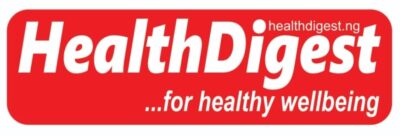
NSW Health Tests For Heavy Metal Contamination
In western New South Wales (NSW), health authorities are currently conducting water testing after a few residents reported heavy metal contamination in some household rainwater tanks near the Cadia goldmine.
Representatives from NSW Health attended a community meeting hosted by the Cadia Community Sustainability Network on Sunday after several people living near the mine had their rainwater tested. Residents suggested that dust from the mine had settled on their roofs and been washed into tanks.
Most properties within a 15km radius of the mine, which is about 22km from Orange, rely on rainwater for their potable water supply.
A spokesperson for Newcrest Mining, which operates the goldmine, said it had been told about some water testing results from some residents but that the contamination did not correlate with the results of their own air quality monitoring programs.
Western NSW Local Health District said it “does not conduct investigations into environmental or ecological factors which may broadly affect the management of water collected privately, including rainwater”, but that it was assisting residents with testing their household tanks.
“Following independent testing not conducted by NSW Health, the community has raised concern with the District’s PHU [public health unit] regarding the safety and quality of privately collected drinking water at a number of private residences south of Orange,” a spokesperson said.
“The District will conduct additional sampling and testing of the drinking water at a number of those residences supplied only by rainwater, to assist residents in identifying any potential contamination which could pose a health risk.
“Should the District’s testing return results outside the Australian Drinking Water Guidelines at any residence, the PHU will provide support and advice to assess and identify immediate sources of contamination and rectify any issues of concern.”
Read Also:
Read Also: LSWC Seeks To Improve Access To Sustainable, Climate-Resilient Water Services
It added that management of private water supplies such as rainwater tanks was ultimately the responsibility of the householder.
Newcrest said the cause of the contamination was “currently unknown”. It has commissioned a third party to test some of the affected tanks.
“We were made aware that some members of the local community recently undertook self-testing on their drinking water tanks that have shown elevated levels of contaminants,” a company spokesperson said.
“We’ve been part of the community for many years and are taking what we have been told seriously, as historical monitoring data shared with the community and regulator does not appear to correlate with what we have been told.”
The company said it wanted to work with the community but stressed that any support it was offering locals who say their water has been affected was in line with support it would ordinarily offer its neighbours.
Guardian Australia understands Cadia offered to arrange a laundry service and to deliver drinking water to one resident, who reported feeling unsafe using their tank water after tests ordered by the resident showed significantly elevated levels of lead and other contaminants.
“Like others, we want to understand what is behind the findings and want to work with the community to do this,” the spokesperson said. “This is our focus and a critical step to ensure the appropriate course of action can be determined, rather than determining actions based on what may or may not be the cause, which is currently unknown.”
Last year, the company was fined $15,000 by the EPA for failing to maintain appropriate dust mitigation levels from its tailings storage facilities. At the time, the EPA stated that it had received “numerous notifications by residents of dust lift events visible from their homes”.













